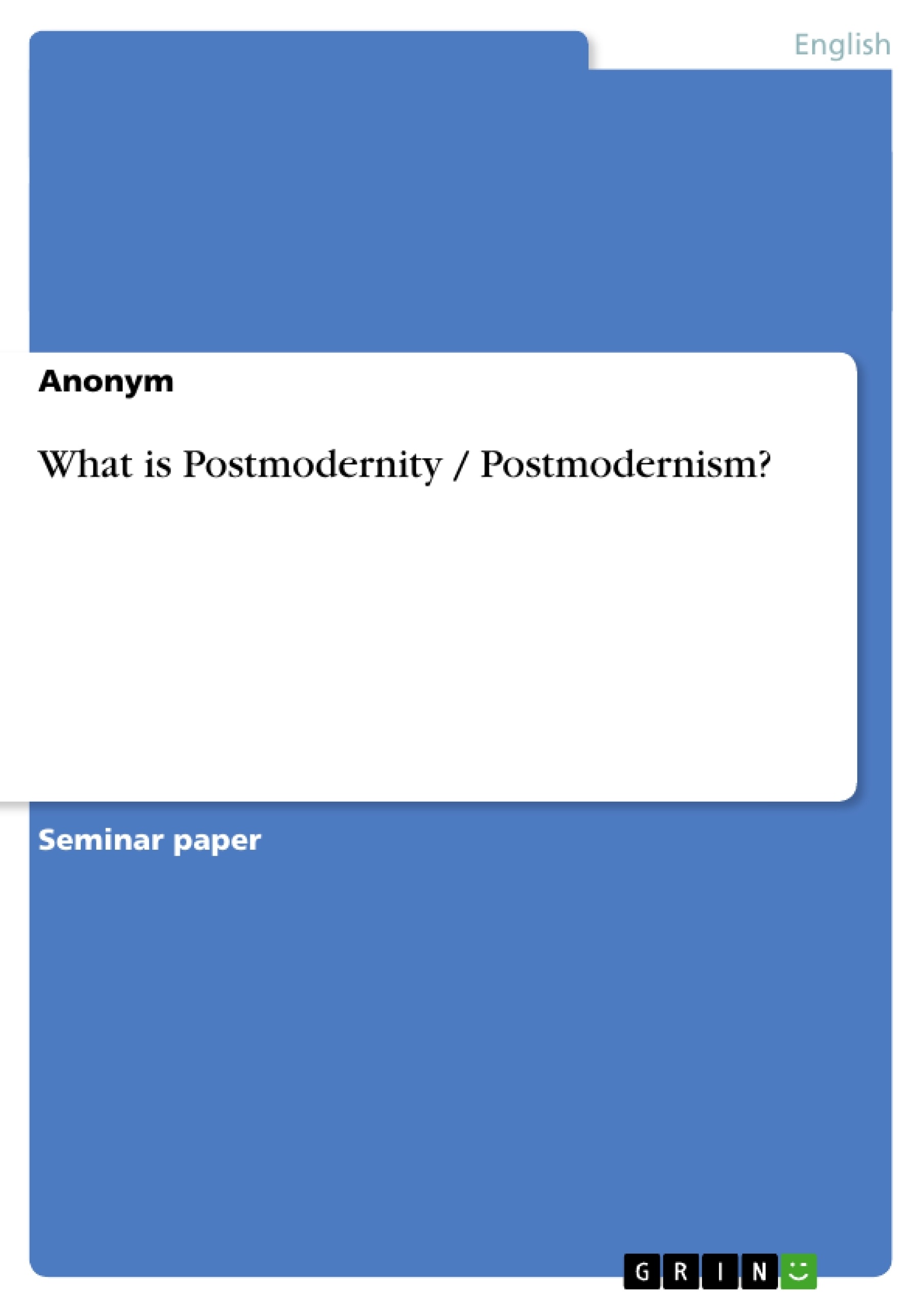Introduction to the concept of Postmodernity / Postmodernism
David Harvey asks how economic shifts can bring about cultural transformations like postmodernism. He believes in material basis of culture, and tries to explain Postmodernity as a historical-geographical condition; Marxism provides the meta-narrative behind postmodernism; it’s not so different that Marxism cannot cope with it.
For Harvey, shift in experience of time and space lies at heart of Postmodernity. Effect of a crisis of Fordist economy. It is link between economy (flexible accumulation) and culture (postmodernism).
This paper is the attempt to give an introduction to the concept of Postmodernity and Postmodernism.
Table of Contents
- A SYSTEMATIC APPROACH
- THE HISTORICAL PERSPECTIVE
- Modernism
- Postmodernity
- THE RELATIONSHIP BETWEEN MODERNITY AND POSTMODERNISM
Objectives and Key Themes
This text explores the relationship between economic shifts and cultural transformations, specifically focusing on the emergence of postmodernity. It examines the material basis of culture and attempts to understand postmodernism as a historical-geographical condition. Drawing on Marxist theory, the text argues that postmodernism represents a shift in the experience of time and space, driven by changes in the mode of production.
- The relationship between modernity and postmodernity
- The impact of economic shifts on cultural transformations
- The role of time and space in shaping social order
- The influence of images and the simulacrum in postmodern society
- The representation of poverty and inequality in a postmodern context
Chapter Summaries
- A SYSTEMATIC APPROACH: This chapter introduces David Harvey's argument that economic shifts, particularly the transition to flexible accumulation, are the driving force behind the cultural phenomenon of postmodernism. It explores the concept of time-space compression and its impact on social order, arguing that changes in the experience of time and space reflect the dominance of the ruling class.
- THE HISTORICAL PERSPECTIVE: This chapter delves into the historical context of modernity and postmodernity. It examines the role of technological advancements in compressing time and space, leading to two distinct reactions within modernism: an attempt to revitalize the Enlightenment project and a focus on place over time, resulting in the aestheticisation of local and national politics. The emergence of postmodernity is attributed to a new quality of time-space compression driven by flexible accumulation, image-based communication, and the rise of the simulacrum.
- THE RELATIONSHIP BETWEEN MODERNITY AND POSTMODERNISM: This chapter proposes that the relationship between modernity and postmodernity can be seen as a reversal. While modernity was characterized by a relative fixity of capital, markets, and authority, it was fascinated by the idea of progress in the course of time. Postmodernity, on the other hand, exhibits flexibility and a strong sense of place, often accompanied by aestheticisation.
Keywords
This text centers on the concepts of postmodernity, modernity, time-space compression, flexible accumulation, cultural transformation, image production, the simulacrum, and the representation of poverty. It explores the relationship between economic shifts and cultural phenomena, employing Marxist theory to analyze the material basis of culture and the impact of economic change on social order. Key figures include David Harvey and the author of the text.
- Quote paper
- Anonym (Author), 2002, What is Postmodernity / Postmodernism?, Munich, GRIN Verlag, https://www.grin.com/document/77083




